The California Community Foundation pledged $1-billion to Los Angeles County non-profits today during a special town hall meeting at the St. Sophia Cathedral in Mid-City. An estimated 400 civic leaders, including L.A. Mayor Eric Garcetti and County Supervisor Mark Ridley-Thomas were among the attendees.
The town hall meeting and funding announcement was part of a celebration of CCF‘s 100th anniversary.
The money will be disbursed over a ten year period and will be paid out in the form of grants, loans and scholarships. Which non-profits will get funds and how much they will get are unknown.
Jonathan Zeichner, Executive Director of the South L.A.-based A Place to Call Home, said that communication between groups like his and the Foundation is key.
“We’re on the ground representing the constituents that we serve,” he said. “[It’s] really important that it’s a two way dialogue.”
CCF President, Antonia Hernandez said she hopes to focus on low income housing, community clinics, and early childhood education. Groups trying to get a cut of the funds will have their application reviewed by the CCF staff and its 20 member board.
“We’re [non-profits] required to show what we will do with the funds,” said Zeichner. “And if we’re doing we we say we are…that’s the basis to continue the funding.”
Representatives from all of the County’s 88 cities were in attendance, signaling the importance of the funds to public officials who are grappling with increases in crime and homelessness in many of their communities. Their combined attendance was also a sign of unity among the county’s various municipalities.
Since 2013 homelessness has risen by 12% across L.A. County, a fact that many attribute to the area’s tight housing supply. A report from the LA Homeless Services Authority released earlier this year had the number of homeless people in the county at more than 40,000.
The problem has gotten so bad that this past month the L.A. City Council declared a “state of emergency” over the issue and dedicated $100 million towards homeless services like shelters and housing vouchers.
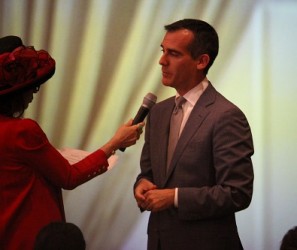
Mayor Eric Garcetti at California Community Foundation Town Hall on October 8, 2015 | Photo by Kevin Walker
Mayor Garcetti, speaking at today’s event, referenced the challenges facing the county but stressed the need for civic pride.
“We’re good at privately saying what we love about L.A., but publicly bitching about what we don’t,” Garcetti said. “We need to invert that.









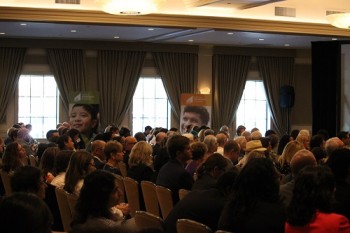
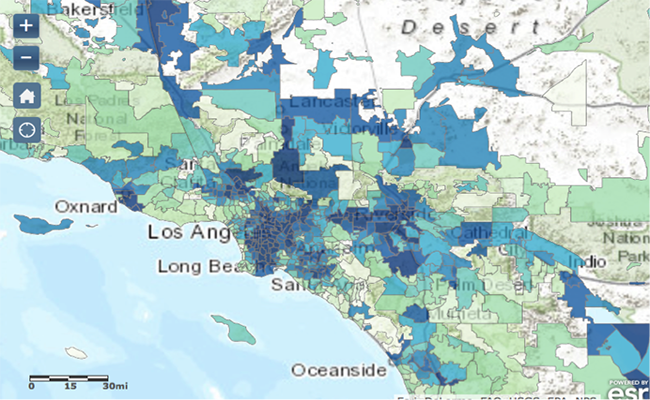
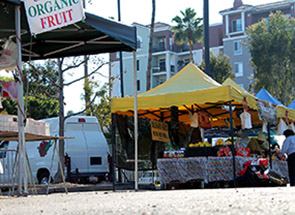
 Los Angeles County is the biggest and most diverse voting jurisdiction in the country with about 4.6 million registered voters. “We’re kind of an anomaly, we actually have more registered voters than close to 40 of the 50 states in the nation,” says Dean Logan, the LA County Registrar-Recorder. His office in Norwalk oversees all of the voting in LA County.
Los Angeles County is the biggest and most diverse voting jurisdiction in the country with about 4.6 million registered voters. “We’re kind of an anomaly, we actually have more registered voters than close to 40 of the 50 states in the nation,” says Dean Logan, the LA County Registrar-Recorder. His office in Norwalk oversees all of the voting in LA County.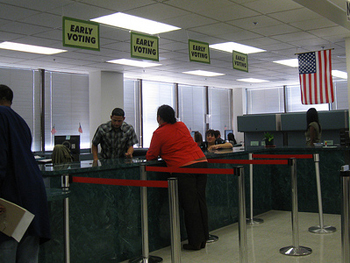
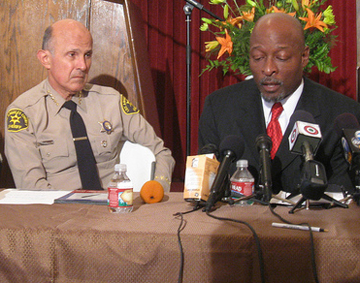 Some Los Angelenos are beginning to speak out in support of Sheriff Lee Baca. The sheriff is facing criticism after the ACLU recently revealed that they’re investigating widespread inmate abuse in LA county prisons under the supervision of Sheriff Lee Baca.
Some Los Angelenos are beginning to speak out in support of Sheriff Lee Baca. The sheriff is facing criticism after the ACLU recently revealed that they’re investigating widespread inmate abuse in LA county prisons under the supervision of Sheriff Lee Baca.




